Women in Thai Cuisine (Part 2): The Era of Change
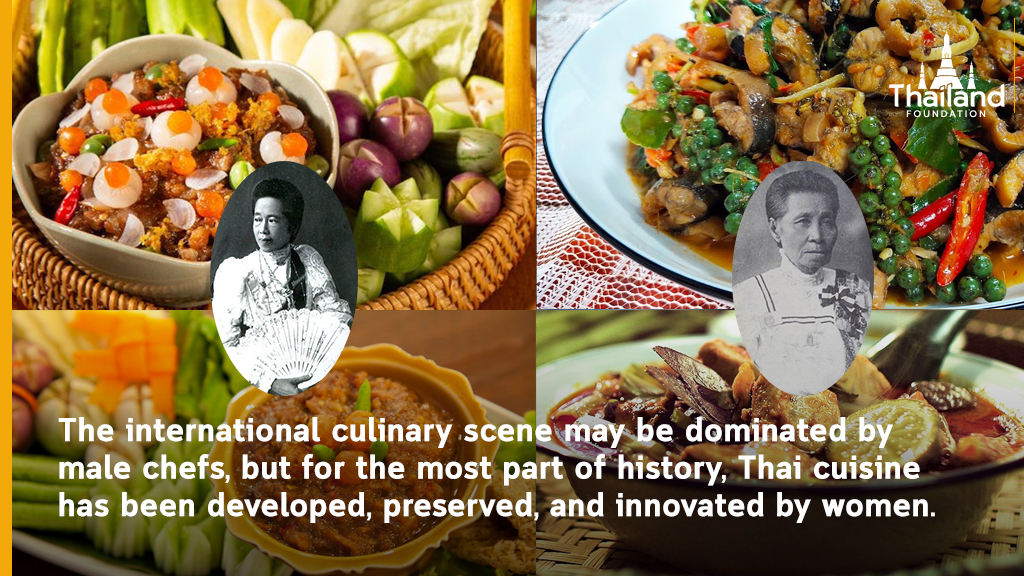
In the first article, we have learned about the contributions of women to the development of Thai cuisine in the classical era from Ayutthaya (1351–1767) to Early Rattanakosin, or King Rama I to King Rama III (1782-1851). We have covered the general knowledge of Thai dining culture, the composition of a Thai set meal or sum rub [สำรับ], the captivating charm of women who can cook, the grand status of female chefs in the Thai food ecosystem, and some female food innovators. In the second part of this article series, we will continue to explore the savory evolution of Thai food in the Mid-Rattanakosin era.
Mid-Rattanakosin Era: The Era of Change
The Mid-Rattanakosin period (1851-1925) expanded over the reigns of Kings Rama IV, V, and VI. This period is characterized by Thailand’s openness to cultures, arts, and sciences from the western hemisphere, including the King Rama V’s European trips and those of foreign diplomats and traders who visited the kingdom. The exchange between the east and the west combined with the pre-existing Chinese culture fused into an even more diverse culinary selection, which yet perfectly retained the characteristics of Thainess.
Soon after the advent of Thailand’s first state printing press in the reign of King Rama IV (1851-1868), Thais could finally hold the first Thai cookbook in their hands, as well as many important food-related documents, such as royal compositions of King Rama V (1868-1910) recording his trips and experiences from different territories, and personal journals of other prominent persons, through which we could see the reworked and revisited nature of Thai food like one-dish meals, snacks, desserts, and international dishes.
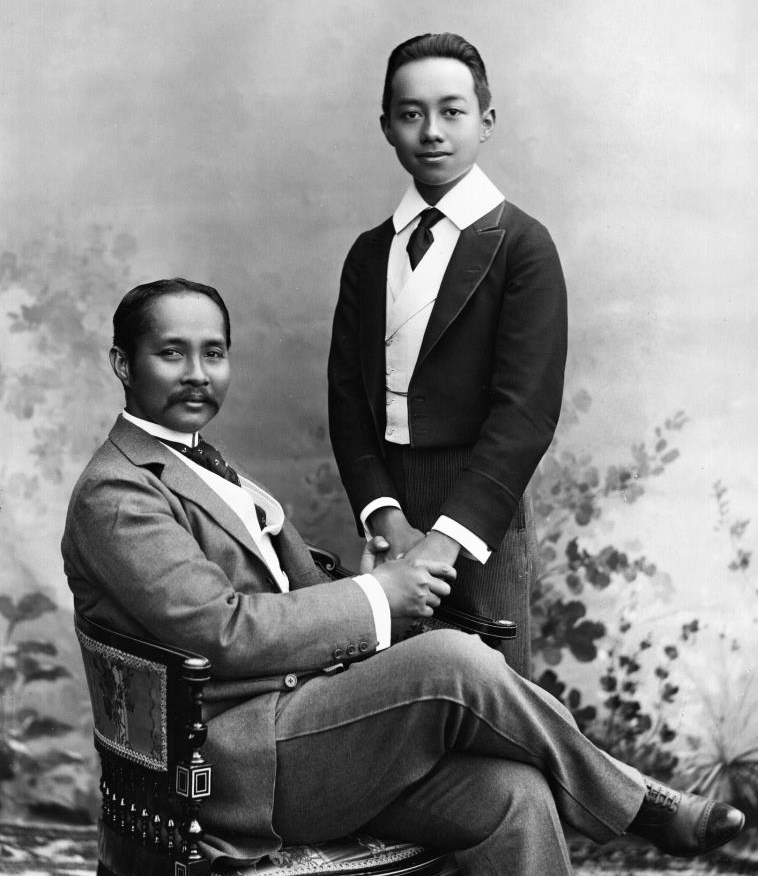 King Rama V (left) and a young King Rama VI (right) [cr. TNews]
King Rama V (left) and a young King Rama VI (right) [cr. TNews]
His Majesty King Rama V himself was a gastronomic connoisseur and nutritionist. In the book “Lords of Life” written by Prince Chula Chakrabongse, who was a grandson of King Rama V and the only child of Prince Chakrabongse Bhuvanath and his Ukrainian wife Ekaterina Desnitskaya, he remembered his grandfather as someone who “worked the hardest and with the greatest perseverance, and in his free time, played the hardest. This was the rule of life he lived by. He took care to have the best meal and soundest sleep. He was a talented chef and relished all kinds of delicious food – Thai, Chinese, Malay and Western. What he enjoyed the most was to have a picnic and cook the food during his travels.”
After King Rama V returned from Singapore, then a British colony, he adopted a habit of having an English breakfast. The royal family and high-ranking officials followed suit. Nevertheless, the art of the Thai royal cuisine was always well preserved and practiced. In 1915, when the king addressed Thai students abroad, he told them to “remember in your heart that you didn’t come here (abroad) to learn to become Westerners. We are here to learn to become Thais who are as knowledgeable as Westerners.”
This was the time when Thailand stepped into modernity but was striving with her best effort to safeguard her identity, and needless to say, Thai women were doughty heroines in this mission, wielding their culinary genius as a weapon.
Important Individuals
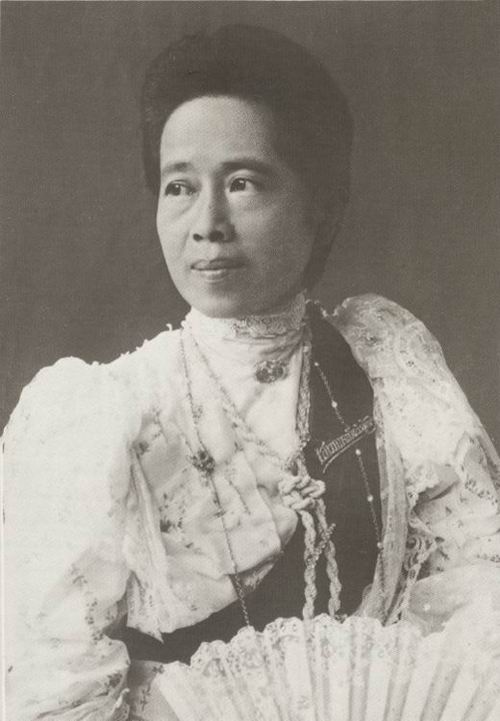 [cr. Wikipedia]
[cr. Wikipedia]
- Saisavali Bhiromya, Princess Suddhasininat Piyamaharaj Padivaradda
Saisavali Bhiromya, Princess Suddhasininat Piyamaharaj Padivaradda or Sai Ladavalya (1862-1929) was the princess consort of King Rama V and renowned queen of the royal kitchen, the duty which she served until the end of his reign. She was regarded as a cooking genius entrusted with the crucial and most exhausting responsibility – preparing every meal for the king, who, as already mentioned, was a discerning gourmand. The health and safety of the monarch, the pillar of the country, rested in the hands of this lady.
Her creations, especially nam phrik [น้ำพริก], or chili paste dip, are still craved and loved by Thais and foreigners. Some of them include nam phrik long ruea (boat embarking chili paste), nam phrik mamuang (mango chili paste), nam phrik phao (sweet chili paste), nam phrik makok (olive chili paste), nam phrik kung haeng (dried shrimp chili paste), and so on. Her rice-based dishes were equally popular and have found their permanent places on the standard Thai menu, such as pineapple fried rice, khao bai sri pak cham (blessed rice shaped as an upside-down cone), rice in a banana blossom, rice in a cabbage, khao ngob pla (grilled seasoned rice stuffed with fish), etc. As an excellent teacher, she was admired by people of the royal court, to whom she passed down every recipe and cooking technique without moderation.
When you are thinking that she could not be even more perfect, Sai Ladavalya was praised for her flawless “four-direction beauty.” You may observe her from the front, the back, and both sides of her profile, and she would still look graceful. Evident to the courtiers was her intelligence and initiatives. She never stopped improving her recipes and developing new ones, inspiring her servants to always learn and work. While other elites who often took a siesta, the princess consort was making flower garlands as a hobby.
Finally, she founded the first nursery in Thailand in the remembrance of her eldest daughter who passed away at a very young age. She took orphans and poor children, boys and girls, under her wings, giving them education and vocational training.
- Examples of Princess Saisavali Bhiromya’s dishes
 [cr. NitRudy]
[cr. NitRudy]
Nam Phrik Long Ruea [น้ำพริกลงเรือ] or “boat embarking chili paste”: It is said that this recipe was served on a boat where little princes and princesses were playing and did not seem to quit anytime soon. The set is composed of nam phrik kapi (shrimp paste chili), sweet stir-fried pork, fluffy deep fried catfish, salted eggs, and fresh vegetables.
 Photo courtesy of Truly Thai Recipes
Photo courtesy of Truly Thai Recipes
Khao Bai Sri Pak Cham [ข้าวบายศรีปากชาม] or “blessed rice shaped like an upside-down cone”: In the Thai culture, we have a ceremony called “Bai Sri Su Kwan,” or a welcoming ceremony. “Bai Sri” refers to the blessed rice contained in an upside-down banana leaf cone, along with other auspicious objects, such as lotus leaves, candles, and holy strings. On the sharp end of the cone is a boiled egg. This version of a bai sri is inedible.
The edible version is composed of steamed rice mixed with tamarind chili paste and shaped like an upside-down cone, fried vermicelli that resemble holy strings, decorated with crispy fried green leafy, and a boiled egg or salted egg yolks on top. To accompany the rice, we have pulled pork, salted fish, and salted egg yolks to contrast with the tanginess of the tamarind chili paste.
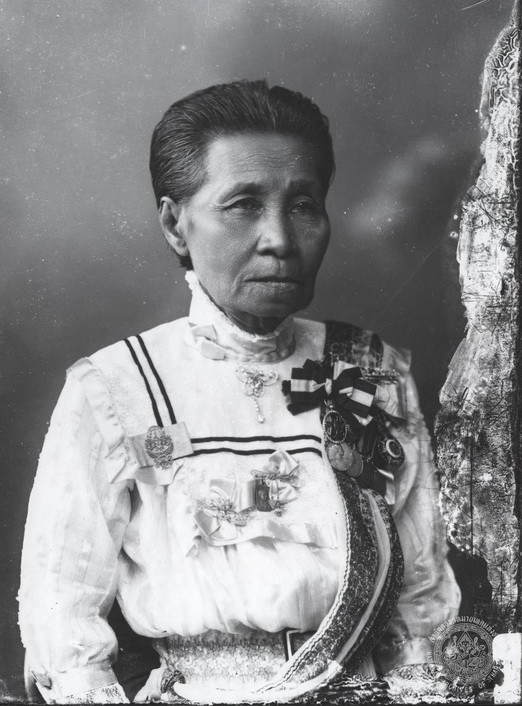
[cr. The Thai Red Cross Society]
- Thanpuying Plian Phasakorawong (Mae Khrua Hua Pa)
Thanpuying Plian Phasakorawong, or Lady Plian (1847-1911), was born in the reign of King Rama III (1824-1851) and passed away in the reign of King Rama VI (1910-1925). She married Chao Phraya Phasakorawong (Pon Bunnag), an important civil servant in the reign of King Rama V and the first Minister of Education.
With her creativity and meticulousness, Lady Plian was a natural cooking maestro for both savory and sweet dishes, acclaimed for her unrivaled skills. She was one of the first food designers. She carved, shaped, and embellished the food with marvelous techniques, such as a famous dessert called luk chup (mung bean paste shaped like fruits and vegetables, then painted with natural colors before coated with clear jelly), or dried and fresh flower art, and scented wax flowers.
 Luk chup [cr. Wongnai]
Luk chup [cr. Wongnai]
In 1889, Lady Plian was a contributing writer for a food column “Mae Khura Hua Pa” in a monthly magazine which unfortunately lasted only six months. The word “Mae Khrua Hua Pa [แม่ครัวหัวป่าก์]” means a female cook. “Mae Khrua [แม่ครัว]” is a Thai word for a female cook. “Pa [ป่าก์] ” is derived from the Sanskrit word “पाक” pronounced “Pa-Ka” which means cooking or the state of being cooked. “Hua [หัว]” is a Thai word and prefix denoting an agent. Altogether “Hua Pa [ป่าก์]” also means one who cooks.
After the monthly magazine was closed, Lady Plian published 400 volumes of her gourmet cookbook as souvenirs for the guests at her wedding anniversary. It turned out that the books were so much appreciated and sought after that she decided to rewrite and publish it under the name “Mae Khrua Hua Pa.” It was the first cookbook ever published in Thailand and is still used as a standard until this day.
The way she explained the recipes and cooking methods revolutionized the Thai cooking tradition. Before, the cook would estimate the quantity of the ingredients according to her personal experience and instinct, but Lady Plian incorporated the measuring system into her practice to ensure the consistency of the recipes. She used Thai selling units in those days to make it easy for readers to imagine the quantity, for example,
“16 baht of pork fat, 13 baht and 3 salueng of pork, 10 baht of sea crab, 12 baht of shallot, 7 baht of garlic, 1 salueng of ground pepper, 1 baht and 2 salueng of coriander, 5 baht of fish sauce, 1 baht of sugar, and half a packet of dumpling flour.”
Dessert recipes and fruit carving techniques were as well included. Yet another surprising element of the book is Thai literature. If certain dishes appeared in Thai literature, Lady Plian would insert the excerpt mentioning those dishes as the introduction of the recipe. For example, she quoted a stanza about massaman curry in “Kaphae Chom Khrueng Khao Wan” (a poem admiring sweet and savory dishes) by King Rama II as an appetizer for her massaman curry recipe. For dishes that were not present in the literature, she would manage to find interesting anecdotes about them. The book “Mae Khrua Hua Pa” even had a section on food curiosities. Even readers who are not keen on cooking can learn some historical facts about food.
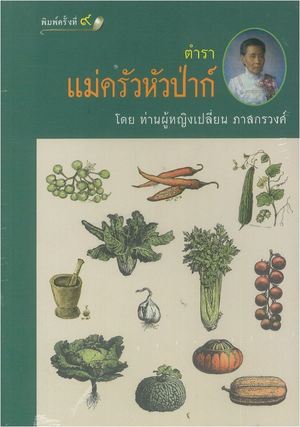
Mae Khrua Hua Pa [cr. Kinokuya Thailand]
Unquestionably, Lady Plian was well versed in cooking, literature, and writing, but besides all that, she was a talented embroiderer. Her exquisite tiger embroidery piece won a prize from His Majesty the King and went on to claim the first place in the world’s embroidery competition in the USA and a cash prize of thousands of dollars.
In 1893, the Franco-Siamese war erupted and took its toll on many civilians and soldiers. Lady Plian could not just stand by. She formed a group of women volunteers to raise fund for medication and humanitarian aids for soldiers injured in the battle and the affected families. This volunteer group was later registered as a charitable association, later renamed as the Siam Red Cross Society, and finally as the Thai Red Cross when it became a member of the International Red Cross.
Lady Plian cooked wonderful sweet and savory dishes for the rest of her life.
*********************
Thai women in the era of change were not afraid to step up and keep abreast of the wind of change that ripped through the world. Still, they retained the grace and beauty of Thai women who never failed to take care of the family, to be gentle, and caring, while openly flaunting their modern, creative, and witty sides.
Their place was no longer in the back of the kitchen. Rather, they became role models and took up important social responsibilities. The transformative change they brought to Thai cuisine will always be a precious legacy for Thailand.
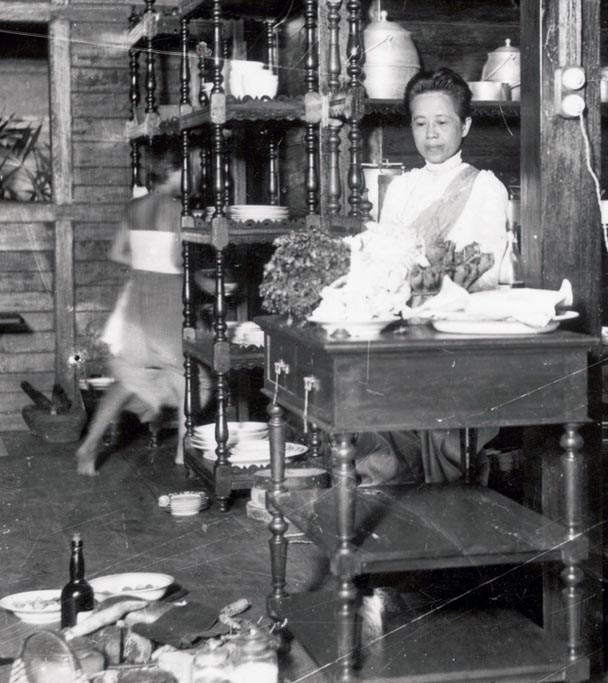
Princess Saisavali Bhiromya in the kitchen [cr. MThai]
References
- The era of change
http://oknation.nationtv.tv/blog/print.php?id=883173
https://www.silpa-mag.com/history/article_12765
- Princess Consort Sai Ladavalya
https://www.komchadluek.net/today-in-history/386522
- Lady Plian
https://www.silpa-mag.com/history/article_8961
- Mae Khrua Hua Pa
https://www.matichon.co.th/columnists/news_403550
https://kosha.sanskrit.today/word/en/paaka
Author: Soonyata Mianlamai
Editor: Tayud Mongkolrat
30 March 2022


